I was so impressed by the sightseeing in St. Petersburg that my filming plans were bumped up a notch. Before my visit I had thought "to express my frustration with Russia's insistence on making visitors get an expensive and pesky visa, I won't promote their tourism with a TV show." After this week, I can't help but dream of coming back with the crew. The city was gray and depressing last time I visited (in the 1990s). It sparkles (and feels much safer) today.
The striking thing about St. Petersburg's amazing subway system (like Moscow's) is that it is extremely deep. It was dug by nearly free peasant labor in the 1930s and -- after a break for World War II -- finished in the 1950s. While London's impressive system feels rickety, St. Petersburg's feels industrial-strength and bomb-hardened. Getting around by metro is second nature for locals. Today millions of citizens who use the system spend a good part of their lives -- about an hour a week -- riding escalators like this.
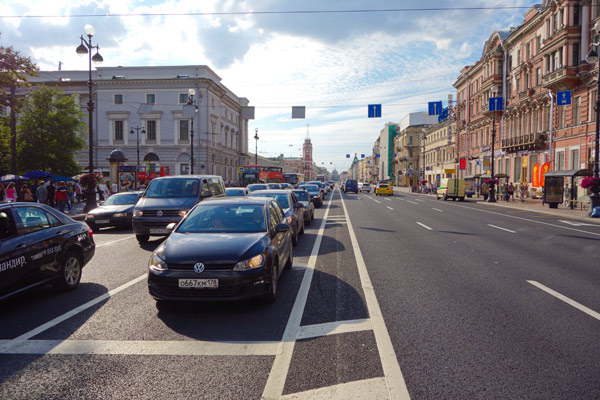
The main drag of the city is Nevsky Prospekt. This provides a spine for your sightseeing leading from the Winter Palace (Hermitage Museum) through the center of town.
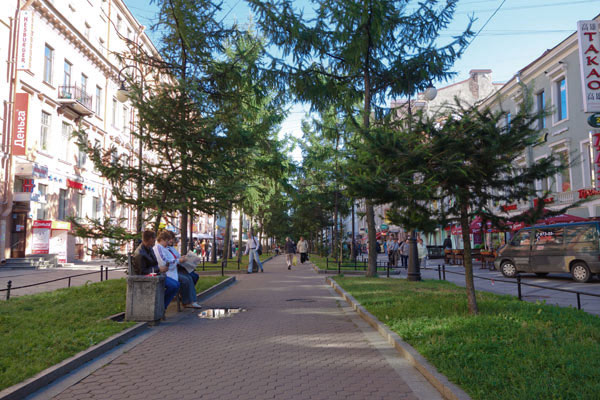
Attractive and entertaining as Nevsky Prospekt may be, it's important to get away from the center and all the touristy stuff. For our guidebook we've added a neighborhood walk through the heart of Vasilyevsky Island, a residential zone stretching from the city center all the way to the massive new Marine Facade cruise port. Something that continually amazes me is that in the early 1700s, Peter the Great, inspired by Amsterdam, laid out his great city in a swamp. Many of the original grid-planned neighborhoods survive. This neighborhood was built with a series of canals -- Amsterdam-style. Later, the canals were filled in. The center of this street, once a canal, then a trolley line, is today simply a well-groomed park.
A new high-speed train, running several times a day, connects Moscow and St. Petersburg in just four hours. Muscovite tourists come to St. Petersburg and tell their guides, "Show us the charm of St. Petersburg." St. Petersburg has charms, like this, that are rare in Russia.
F:\PUB\Blog\photos\summer blog art\russia\58-river-ships-waiting.jpg
St. Petersburg is a city of venerable, low-slung bridges. But each night at about 2:00 a.m., traffic is interrupted as the bridges open up and ships -- which were stacked up and waiting patiently all day -- motor through to begin their journeys through the Russian heartland. With the help of Soviet-era canals, shipping from Russia's western port (St. Petersburg on the Baltic Sea) can get to the Volga and other great rivers and voyage to the Black Sea, the Arctic, and beyond.
By the way, one of my guides explained to me that 80 percent of Russians just want stability. Putin is so popular because, while he may not be an icon of democracy, he symbolizes stability. Anyone who wants something else is deviating from the norm -- thus a "deviant."
Speaking of deviance: One night recently, a group of deviant artists arranged (in a matter of minutes) to paint a giant erect penis on the street section of a bridge that would rise to let the cargo ships through at 2:00 a.m. The bridge happened to face what's called "the big house" -- the former KGB headquarters, now the headquarters of the Russian version of our CIA. As planned, when the bridge was raised, a towering penis flipped off that symbol of Russian non-democracy. (You can see this on YouTube.)
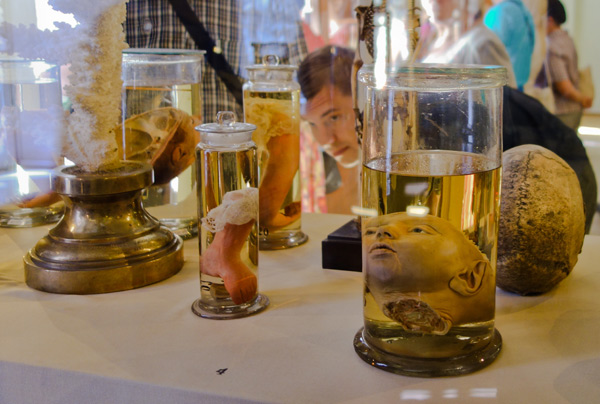
Three hundred years ago, Czar Peter I became Peter the Great because of his huge personality -- a great traveler, city planner, warrior, scientist, and the Westernizer of Russia. In his travels he brought back lots of scientific wonders that illustrated his curious mind. The Kunstkamera, the oldest museum in town and one of St. Petersburg's most interesting sights, includes Peter the Great's personal freak show -- typical of the period -- of all kinds of human and animal deformities preserved in jars for three centuries.
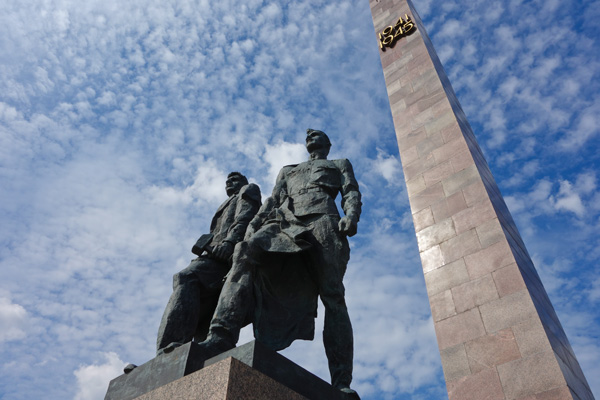
St. Petersburg suffered like no other big city in World War II -- with a 900-day siege that started in 1941 and lasted through three brutally cold winters. Starvation and desperation wracked the city but, with a courageous volunteer army, it stood strong against a determined Nazi army. I was impressed by this memorial to those who defended the city during what Russians call "The Great Patriotic War." I wrote it up in our guidebook this way:
Monument to the Heroic Defenders of Leningrad -- It's hard to imagine the horror, suffering, and importance of the Siege of Leningrad, also known as "The Battle of 900 Days." Hitler intended to literally wipe the city off the map...and the people of Leningrad knew it. The city survived, and May 9, 1945, was Victory Day. To mark the 30th anniversary of that victory, on May 9, 1975, this stirring monument was inaugurated. 700,000 Nazi troops got to the edge of the city, and this -- with its 48-meter-tall granite obelisk with the dates 1941-1945 -- marks the spot where the 300,000-strong ragtag army of mostly volunteer Soviets held the line. In the sculpture at its base (called The Victors), a worker stands by a soldier, symbolizing the unity of the people and the army in the struggle against the enemy. With the music of Shostakovich or Rachmaninoff playing, visitors ponder the million people who died defending the city. Walking by 900 lamplights (symbolizing the 900 days of suffering the battle brought), you enter an underground exhibit with a powerful 10-minute movie showing life and death during the siege.
By the way, while the city dumped the term Leningrad for other uses, when referring to the city during the siege, "Leningrad" is still used out of respect to the people whose valor and suffering saved the city. Each May 9, you see hammers, sickles, and the word Leningrad all over St. Petersburg.
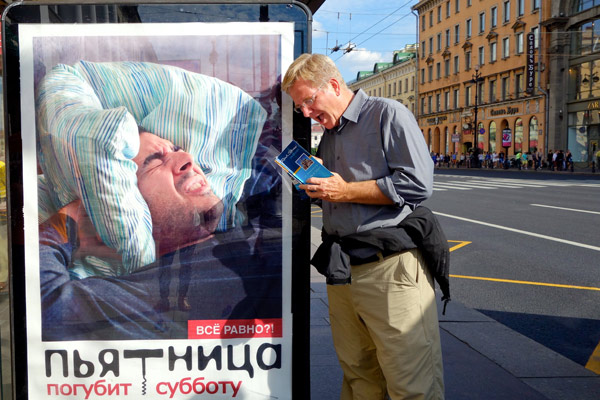
While I try to teach with a gentle touch, some travelers just don't realize that my tips will make their travels not only more fun and meaningful, but less expensive. In these isolated cases, I need to be more forceful. Photo by Trish Feaster, The Travelphile.com.